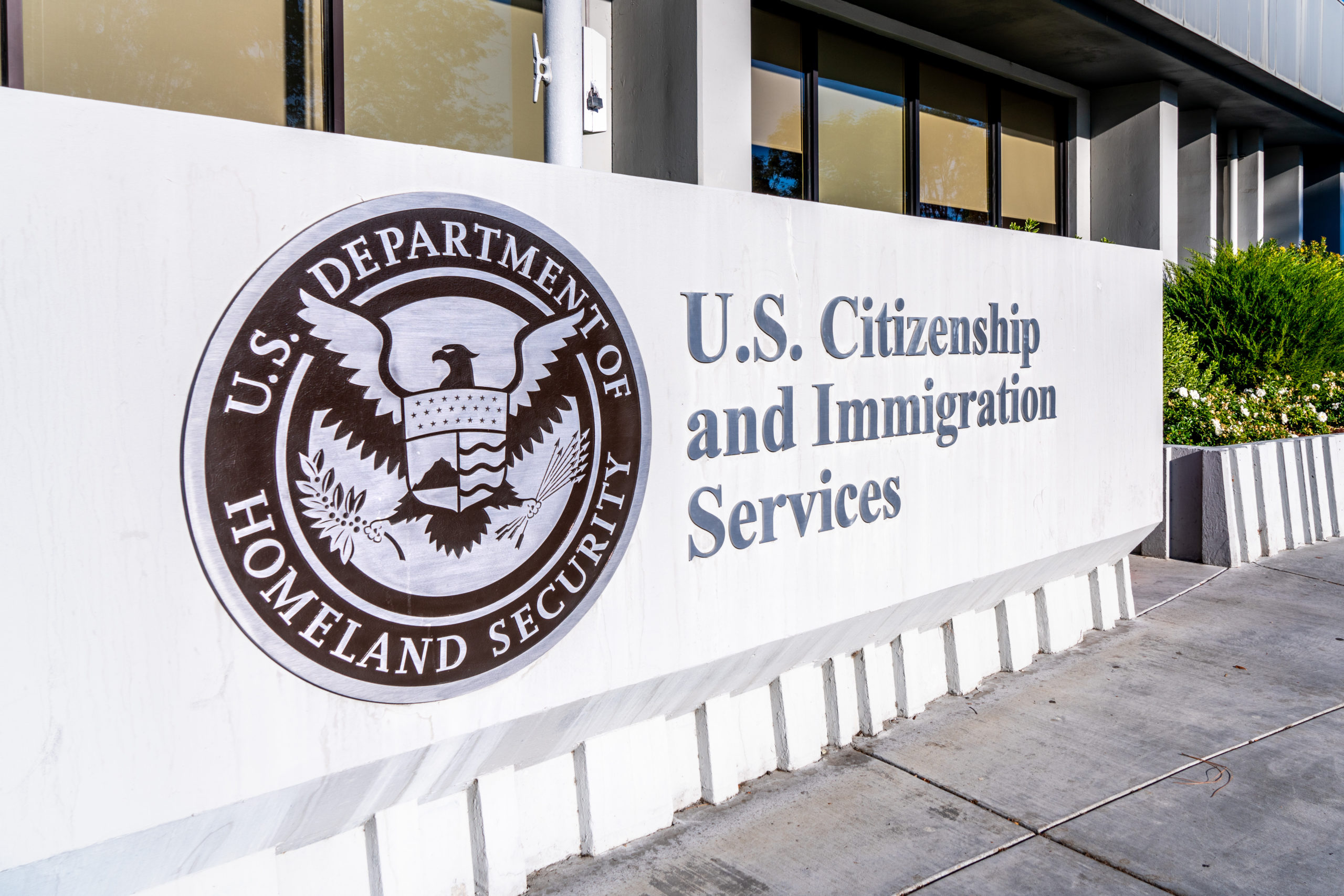Complete Guide to Recruiting Foreign Workers
Complete guide for employers to learn about recruiting foreign workers using TN, H-1B visa, H-2A, H-2B, L Visa, E Visa, Green Card, and Naturalization
“With an ever-tightening labor market in the U.S. many businesses have started to explore the requirements for foreign worker recruitment.”
Foreign Workers Meet the Labor Needs of U.S. Businesses
If you are an American business owner faced with a labor shortage, then recruiting foreign workers might give you the edge you need to stay afloat or expand your small business.
Undoubtedly, many companies are expanding into the global market and having skilled foreign professionals has become an undeniable asset to stay ahead. Whether you are looking for laborers or seasoned professionals to meet your business needs, hiring foreign workers might be the solution you need. However, you’ll need to familiarize yourself with the government agencies, regulations, applications, and authorities involved in employing foreign workers.
Dealing With U.S. Immigration Law
As any American knows, dealing with the federal government is rarely an easy task. Most of the time the undertaking is fraught with excessive amounts of time spent on the phone on hold, being transferred from one office to another, and plenty of red tape. It’s enough to send any would-be business owner scrambling for an aspirin to relieve the pounding headache caused by the hassle. However, don’t let the possible roadblocks deter you from employing a foreign workforce.
“There are options written within the federal immigration law which lets certain employees from Canada, Mexico, and other countries enter the United States for work so why not reap the benefits of employing diversity?”
U.S. Visa Programs for Foreign Workers
Immigration is a hotbed topic in the United States. Many Americans think that the laws concerning immigrant and nonimmigrant visas are black and white, but there are many available visa programs for foreign workers.
If you are a business interested in hiring foreign workers from Canada or Mexico to meet your labor needs, then you’ll want to explore the various visa programs available to see what one is appropriate for the international employees that you are interested in hiring.
H-2A Visa – Temporary Agricultural Workers Program
If you are a farmer who is having a difficult time finding seasonal or temporary agricultural workers in your geographic area, then the H-2A visa program is a godsend. It will help you find workers to help cultivate and harvest your crops.
The H-2A Temporary Agricultural Workers Program is often simply referred to as the H-2A visa program. It was designed to assist American farmers to ensure that they can meet the food production needs of the country by filling employment gaps with foreign worker recruitment. The entire process has been streamlined and it is remarkably easy for you to sponsor workers to meet your farm’s needs (unlike other government programs which are complicated).
About the H-2A Visa Program
Do you need temporary or seasonal agricultural workers? The H-2A program will supply you with the labor force you need to complete your agricultural work whether it is planting, cultivating, or harvesting. You can fill both temporary and seasonal positions using H-2A visa foreign workers. This program is perfect for farms, ranches, ranges, plantations, orchards, nurseries, greenhouses, and other agricultural operations.
Definitions of seasonal and temporary employment:
One thing to note is that if you have been impacted by a layoff, strike, or work stoppage within 60 days of when your work is scheduled to start then you might not qualify for the H-2A program.
As an employer, you’ll need to partner with the State Workforce Agency to first recruit U.S. workers before you can utilize foreign worker recruitment. The State Workforce Agency will post your job listing to hire U.S. workers first.
It is required that you accept any eligible U.S. worker referrals who apply for the job and keep them employed for at least 50 percent of the time span outlined in the work contract. However, once the 50 percent has passed then there is no obligation to continue the employment or rehire.
Want to Participate in the H-2A Visa Program?
If you are interested in hiring new agricultural workers using the H-2A visa program or want to extend the employment of your H-2A workers, then continue reading to learn more.
Are you happy with your current team of foreign agricultural workers? If so, then you’ll want to explore extending the worker’s current H-2A visa contract.
You can request a short-term extension of two weeks or less by submitting a Petition for a Nonimmigrant Worker to the USCIS and send notice to the DOL explaining why you are requesting the visa extension.
Expenses Faced by an Employer for Foreign Worker Recruitment
As an agricultural employer, you will face expenses involved in the H-2A visa process.
Costs involved in the H-2A visa application:
Expenses you can be reimbursed for include:
Expenses you cannot be reimbursed for include”
Dependents such as the spouse or unmarried children (those under the age of 21) can join the H-2A worker in the US and can even seek what is known as an H-4 nonimmigrant visa couple with an Employment Authorization Document (EAD) to legally work during their stay in the country.
As an employer, you are not responsible for paying for travel or housing costs for families of the H-2a visa holder.
A spouse and unmarried children (under 21 years of age) of an H-2A worker may seek an H-4 nonimmigrant visa, but employers are not responsible for the travel or housing costs of family members.
H-2B Visa for Non-Agricultural Workers
The H-2B Visa is like the H-2A but should not be confused because the H-2B is only for non-agricultural workers. The program was designed to provide help for seasonal businesses or those undergoing predictable employment fluctuations.
The visa program is in very high demand. The U.S. government caps the visas out at 66,000 per year with 33,000 allocated in the first part of the fiscal year which runs from October 1 to March 3 and the other 33,000 plus any additional visas provided during the second part of the fiscal year which runs from April 1 to September 30.
If you are an employer seeking labor help using the H-2B visa program, then you must obtain a temporary labor certification from the DOL. It clearly shows that you are paying the prevailing wage for the petition and outlines an insufficient supply of U.S. workers to fill your job vacancies in your geographic area.
As an employer, you must have the following to sponsor an H-2B visa petition:
All H-2B positions must be either temporary, full time (more than 35 hours per week) and non-agricultural.
The purpose of the H-2B visa is to supply workers for temporary nonagricultural jobs. As an employer, you must prove that you simply do not have enough U.S. workers who are either qualified for, willing, or able to perform the work. Also, you must show that U.S. workers will not be adversely affected if you employ foreign workers. All work for the H-2B visa must be considered temporary.
The USCIS defines ‘temporary’ as:
The government seems to view the term ‘temporary’ as a maximum time length of ten months. At the end of the time allotment, the worker must leave the United States and return to their country. If you need the employee to come back for another season of work, then you’ll need to reapply for a new H-2B. The maximum time any worker can stay with an H-2B is three years.
What Employers Sponsor H-2B Visas?
The following employers and industries regularly sponsor H-2B visas to meet their workforce needs:
If you are an employer and you want to use the H-2B sponsorship program to meet your employment needs, then you’ll need to file with the DOL a Prevailing Wage Determination which states that you will pay prevailing wages for the positions you are trying to fill. You’ll also need to fill out a Temporary Labor Certification with the DOL. The DOL is tasked with determining if there is a shortage of U.S. workers to meet your employment needs for temporary work. They will also decide if employing foreign workers will negatively affect the working conditions or wages of U.S. workers in the area.
As with the H-2A, there is a lottery involved with the H-2B visa. The visas are issued using a random lottery system. As an employer, you’ll need to have all your paperwork completed and ready in advance before the close of the lottery. Make sure you file the Prevailing Wage Determination at least 60 days before you need the workers. Also, ensure that the Job order and the H-2B applications are completed from 75 to 90 days before you need the position filled.
Additional Visas Issued After Lottery
On occasion, the Department of Homeland Security (DHS) might release extra H-2B visas if there is a labor shortage in the geographic area. In April 2021, DHS released an additional 22,000 H-2B visas to meet the needs of the labor shortage but 6,000 of the visas were allotted to citizens only of Honduras, Guatemala, and El Salvador.
Dependent family members can enter the United States with an H-2B worker, but they cannot work in the United States during their stay. As an employer, you are not responsible to pay for the travel expenses or housing of the dependents of the H-2B worker.
U.S. Employers Seeking Foreign Worker Recruitment
If you want to hire foreign workers for your company, then you’ll need to take a proactive approach because the process can take months (and in some cases years) to complete. You’ll want to identify the roles within your business or agricultural company that the foreign workers will perform. Moving forward, you’ll need to start filling out and submitting all the necessary certifications and forms with the U.S. government needed for visa sponsorship depending on the type of visa.
TN Visa for Mexican and Canadian Nationals
Mexican and Canadian nationals with specific professional credentials or education may enter the United States for employment if it directly relates to their professional specialty.
As with the H-1B program, a TN worker is allowed to stay in the United States for up to three years but there is no limit on how long the worker can stay with a TN visa. They just must return to their home country in the future for a time before returning to the U.S. TN extensions are completed with the USCIS. Extensions can be obtained at the U.S. consulate in Mexico or Canada.
The TN program is wonderfully flexible for any employer who wants to hire a Mexican or Canadian national worker. There are no advance petitions required and you do not have to worry about visa caps or fiscal year limits.
A Mexican national can request a TN visa stamp at any U.S. consular post. Canadian nationals can enter the U.S. at the border or with a preflight inspection at an airport where they can apply to enter the U.S. as a TN worker. If the worker meets the USMCA qualification, they can immediately apply for a TN and start work upon entering the country.
Problems with the TN Visa for Mexican and Canadian Professionals
With the TN visa there is no leeway for dual intent. A TN worker cannot seek permanent residency or apply for a green card. If the visa holder tries, it could easily cancel the status of the TN visa and cause the worker’s removal from the country.
TN workers must continue employment with the sponsoring employer to maintain the TN status. They can change employers, but they must wait for the new employer to file and then file a TN petition extension or leave the US and reapply for a new TN visa if they are a Mexican National.
Family Members and the TN Visa Holder
The spouse and/or any dependent children under the age of 21 can accompany a TN visa holder with a TD visa. Mexican nationals must file for the TD stamp at a consulate. However, Canadian citizens can obtain the TD at a border crossing or airport where they will be issued an I-94.
The H-1B visa program is a nonimmigrant work visa that lets employers in the U.S. hire foreign workers for certain types of professional positions that require a bachelor’s degree or higher. Occupational fields that regularly petition to hire foreign workers on an H-1B visa include finance, IT, architecture, engineering, higher education, math, science, and others.
Limits Placed on the H-1B Visa
Foreign workers with a master’s degree or higher from a U.S. institution are eligible for an additional 20,000 visas.
The cap does not apply to any U.S. employer who is an institution of higher education, a government research organization, or a nonprofit organization with direct connections to a higher education institution.
Each year, the window for the registration process lasts only 14 days. After registering the status is visible online. The USCIS will let anyone who registered, or their representative know when the cap is reached for the year.
If you are an employer whose employee has been selected to apply for an H-1B visa, then you’ll need to start the process of filing a petition on their behalf.
The H-1B for Canadian or Mexican Nationals
When hiring Canadians or Mexicans for professional positions, employers have the choice of the H-1B or TN visa (we will explore the TN visa later in this article). The H-1B program is a good choice for either Canadian or Mexican nationals. They are allowed to stay and work in the U.S. for up to three years under the H-1B visa and can extend their stay up to a total of six years if they continue working for the original employer who petitioned for them. In addition, if they wish to leave the U.S. to visit family or for other reasons then they are allowed to do so as long their H-1B is valid.
The H-1B Dual Intent Benefit
An important aspect to note about the H-1B program is that it allows for a law referred to as ‘dual intent’. It basically means that foreign workers in the United States with an H-1B are considered nonimmigrant.
Under most circumstances, a nonimmigrant cannot stay permanently in the U.S.
However, with the H-1B visa, a worker can say that they intend to be a nonimmigrant and leave the U.S. but stay permanently by extending their stay beyond six years if they are waiting for an employer-sponsored permanent resident application process to complete.
Mexican and Canadian nationals consider the H-1B visa a fantastic way to enter the U.S. and attain a green card which will lead to eventual permanent resident status with the help of their employer.
Problems with the H-1B for Mexican and Canadian Nationals
No visa program is perfect and the H-1B does have problems. There is a significant wait for H-1B visas and there is no guarantee each year that the foreign worker will get the visa due to the cap so, as an employer, you might be left short staffed if your would-be employee does not gain approval.
As an employer, you are placed on hold just as much as the foreign national waiting for their visa approval. This can throw a serious wrench in the whole hiring process if you need the position filled ASAP, but you are forced to wait a year or two to gain the professional you want to employ.
Any employer who wishes to sponsor an H-1B worker must complete the online registration between specific dates which is usually on a 20-day window in the spring. If you drag your feet or forget to carry out the online registration, then you will be unable to sponsor the worker until the following year when you can again fill out the registration form and again await the lottery results.
If you sponsor a Mexican or Canadian for the H-1B visa program then you’ll complete the registration in March, hope that that person is selected via the lottery and the petition is approved. If everything goes smoothly, then your new employee can enter the United States and start working after October 1st.
One thing to remember is that an H1-B visa is never a sure thing because petitions are often denied. The employer and the potential employee must show a very close connection between the employee’s educational degree and the job they will be performing. The job must require a four-year degree and many positions do not actually need a person with a four-year degree to perform.
To maintain the H-1B status, an employee must continue to work with the employer who petitioned for the visa. The employee cannot cease working for the employer and look for employment elsewhere. If the employee does wish to terminate their employment with the original employer who sought the H-1B petition, then an H-1B transfer petition must be filed by a potential new employer.
During the process, an employee can start working for their new employer, but the petition can end up being denied and the worker would be forced to leave the country if they failed to gain work authorization.
If you are an employer who wants to hire someone who is currently working in the U.S. with an H-1B visa, then you should consult with qualified immigration counsel prior to making the H-1B sponsorship for the employee to change employers. .
L Visa or E Visa: Employers Opening a New Business or a Foreign Company
Multinational corporations, businesses, and companies move team members from country to country such as from Canada to the U.S. Sometimes, to successfully meet employment needs, companies must use various immigration strategies that are formed to fit each unique scenario. Often, they will use temporary visas issued for training purposes or go with longer-term visa solutions.
Foreign investors or business entrepreneurs might want to investigate the L Visa, the E visa, or a combination of L Visa/E Visa. The L or E visa employee sponsorship options are normally for large foreign-owned companies with offices in the U.S. or corporations fitting certain requirements such as being traded on the foreign stock exchange.
Green Card or Naturalization
Many employers want to go the extra mile by providing employer sponsored green cards. Such an option is a way to hire foreign employees.
If you are an employer wondering if it’s time to sponsor a foreign national for permanent resident status, then you’ll want to identify any employees that you are considering sponsoring for permanent residency.
For employees with an H-1B and an L Visa, the PERM process is one of the best options. An employer will have to show that there is insufficient employee talent in the regional area which is why they are hiring from an outside foreign workforce. The entire sponsorship process can take a year or more.
At AW Labor we know that visa sponsorship compliance is confusing and difficult. Our team is here to help you with all your company’s foreign worker recruitment needs whether you are seeking to employ Mexican or Canadian agricultural workers with an H-2A visa sponsorship or non-agricultural workers with an H-2B visa sponsorship. We will ensure that your company is in compliance with all local, state, regional and federal laws, regulations, and requirements. Contact us today to learn more!






